| |
Yes, you’re invited to throw something off the Astoria Column
By Tom Adkinson
April 14, 2023
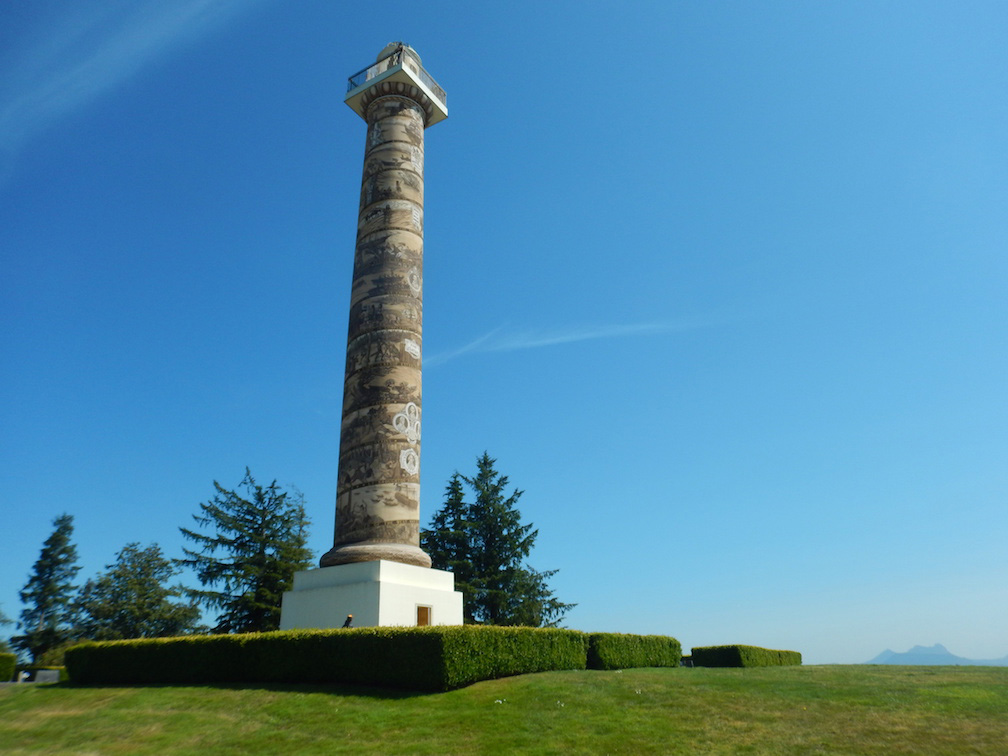
The Astoria Column is 125 feet tall, but it has a 600-foot head start on its elevation because it is atop a towering ridge. Image by Tom Adkinson
|
ASTORIA, Ore. – Whether you are a child or an aging baby boomer, who could resist the opportunity – no, the invitation – to throw something off the top of a tall building?
That invitation exists in the coastal city of Astoria at the 125-foot-tall Astoria Tower. Making the activity even better, the column sits atop Coxcomb Hill, which rises 600 feet above the quite visible mouth of the Columbia River.
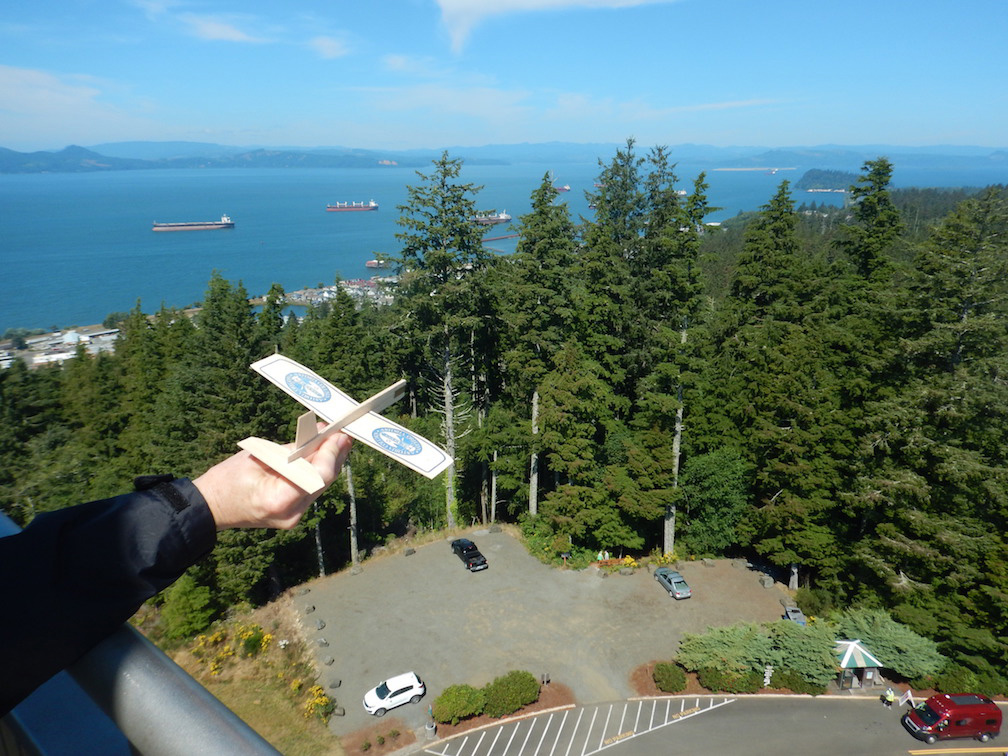
For many visitors, the thrill of a visit to the Astoria Column is sailing a balsawood airplane from the observation deck. Image by Tom Adkinson
|
All in all, it’s a spectacular place to sail a balsawood airplane into air, watching it with the hopes that it will circle and swirl and land a considerable distance from the historic column.
The cost is minimal – all of $1 for an airplane at the column’s gift shop – but there is one glitch. The only way to the top of the column is to climb the staircase that spirals through the column’s interior. There’s no elevator.
The Astoria Column is quite the sight and has quite a history, even if you don’t buy an airplane or challenge your calf muscles with a climb to the top. This is no plain-Jane monolith such as the Washington Monument, with its impressive, but totally blank sides. Instead, the exterior of the Astoria Column is covered in art and is a veritable history book about the Pacific Northwest.
The dream of an adornment atop Coxcomb Hill began in 1898. The idea was to build an electrified tower to rival the Eiffel Tower, which had opened in 1889.
That didn’t work out, and when the city’s centennial rolled around in 1911, the hilltop decoration was an electric sign that said “1811-1911.”
A new idea emerged in 1925, pushed by Ralph Budd, president of the Great Northern Railroad. He envisioned a series of 12 markers from St. Paul, Minn., to Astoria, with the Astoria Column to celebrate the region’s settlers. New York architect Electus Litchfield proposed a column and engaged an Italian immigrant artist named Attilio Pusteria.
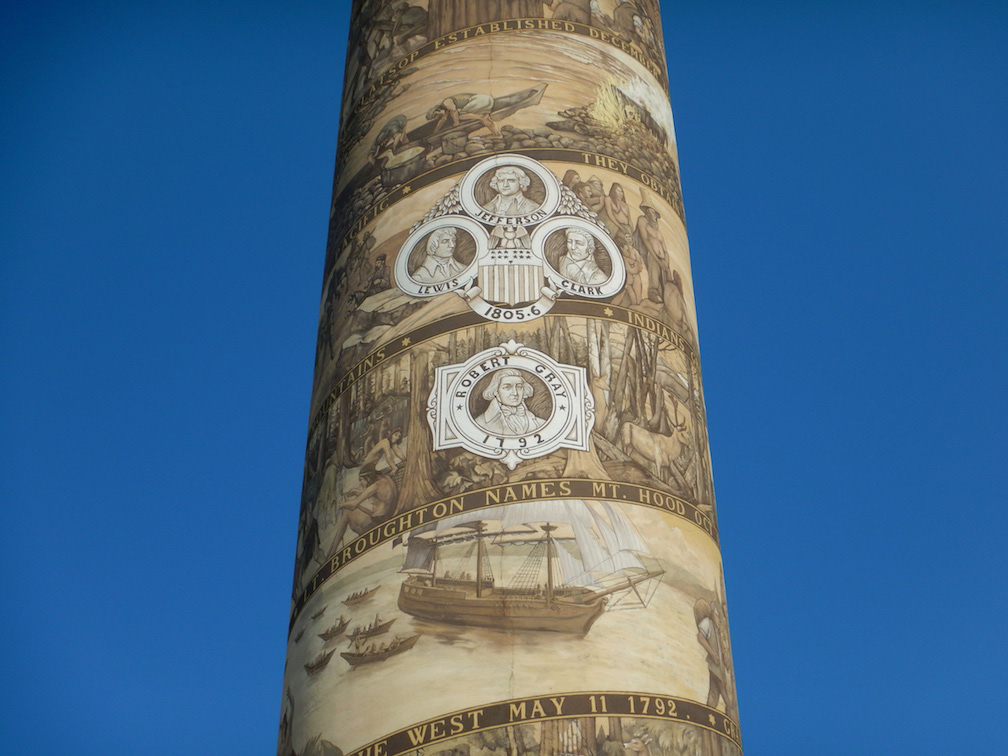
A 525-foot-long plaster frieze spirals up the column and tells many chapters in the history of the Pacific Northwest. Image by Tom Adkinson
|
Pusteria’s idea was a sgraffito frieze – a swath of plaster sculpture decorated with colored powder that wound its way up the column. The swath was nearly seven feet wide and 525 feet long. Pusteria and his crew climbed scaffolding and dangled from ropes to apply the plaster, shape its designs and add color.
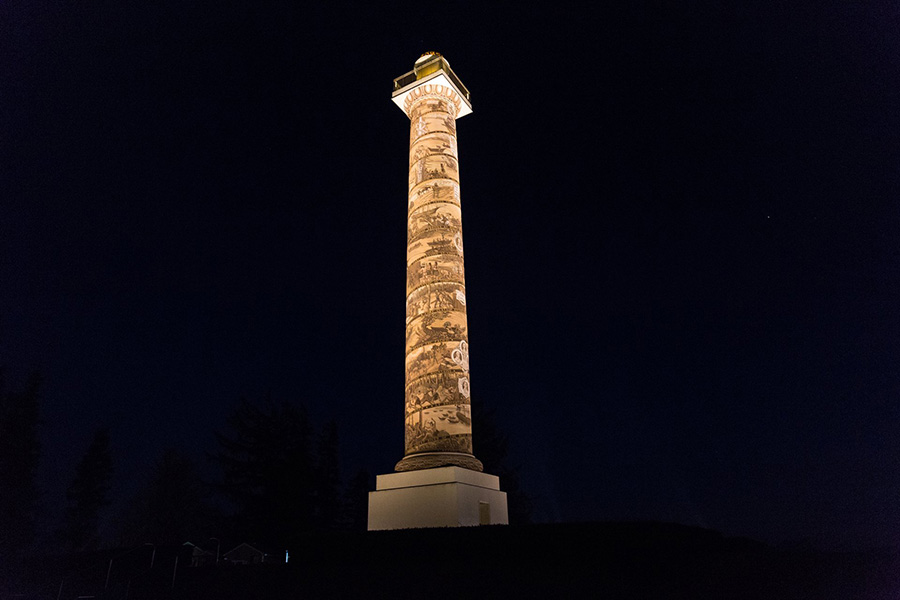
Dramatic lighting makes the Astoria Column a true beacon along Oregon’s coastline. Image by Joni Kabana/Astoria-Warrenton Area Chamber of Commerce
|
The dedication was on July 22, 1926, although Pusteria continued work for three more months. The harsh weather of the Pacific Northwest is not kind to the artwork, and million-dollar repair and restoration projects have been required over the years. The original cost was about $10,000, including fees to the architect and the artist.
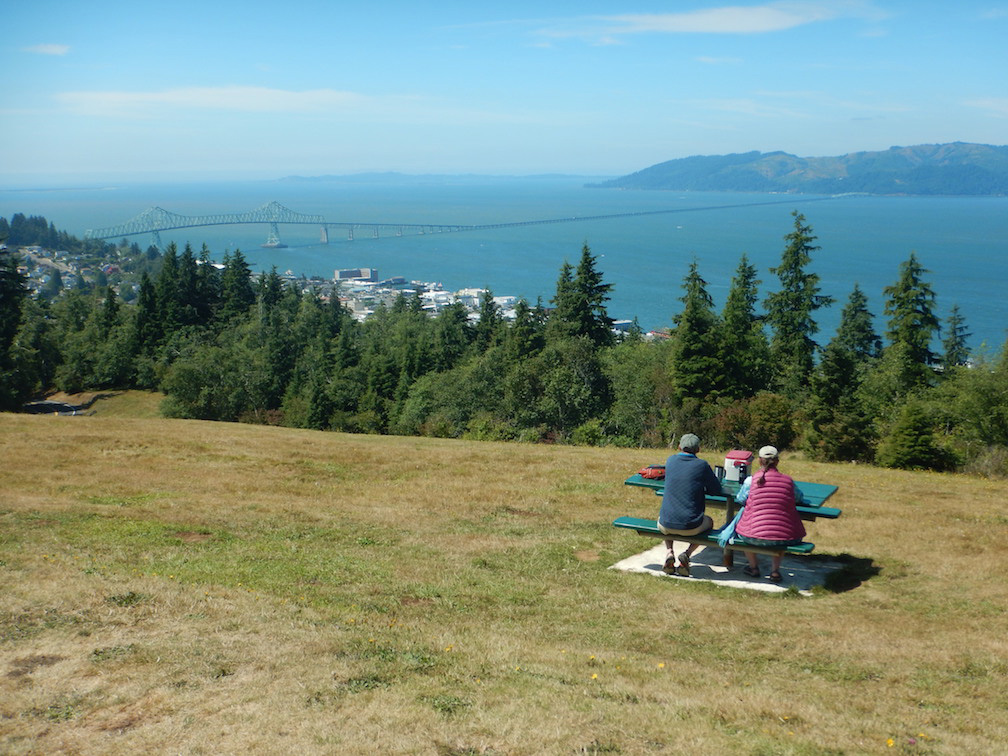
Picnickers have a clear view of the mouth of the Columbia River and the Astoria-Megler Bridge connecting Oregon and Washington. Image by Tom Adkinson
|
So what stores does the column tell? It begins with scenes of Native Americans before the arrival of American and European explorers and traders. It continues with depictions of the Lewis and Clark expedition, construction of fortifications, arrival of pioneer settlers, Oregon’s statehood and the arrival of the railroad.
The column is in a 30-acre park with a commanding view of the coast, sailboats, ocean freighters and the Astoria-Megler Bridge that links Oregon and Washington across the mouth of the Columbia River.
For many visitors, however, the most memorable sight is a tiny balsawood airplane gently soaring through the air on a flight to nowhere in particular.
Trip-planning resources: AstoriaColumn.org, TravelAstoria.com and TravelOregon.com
|



